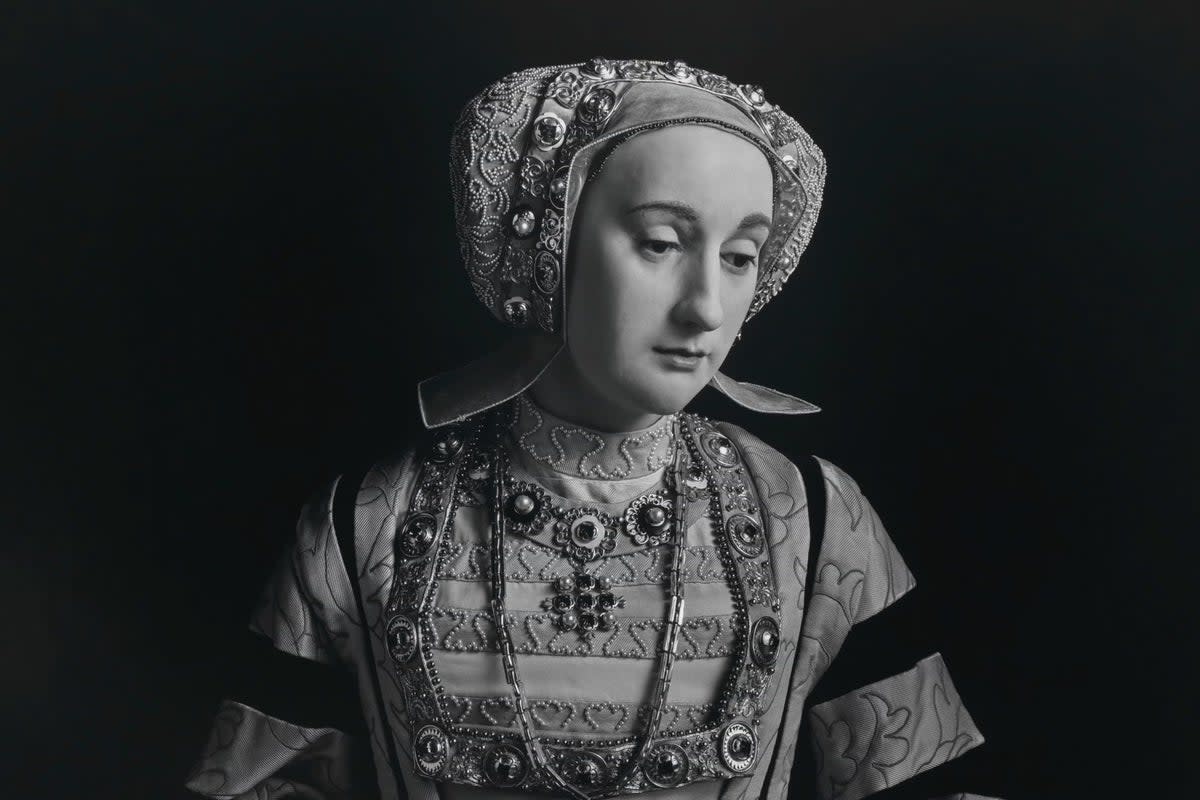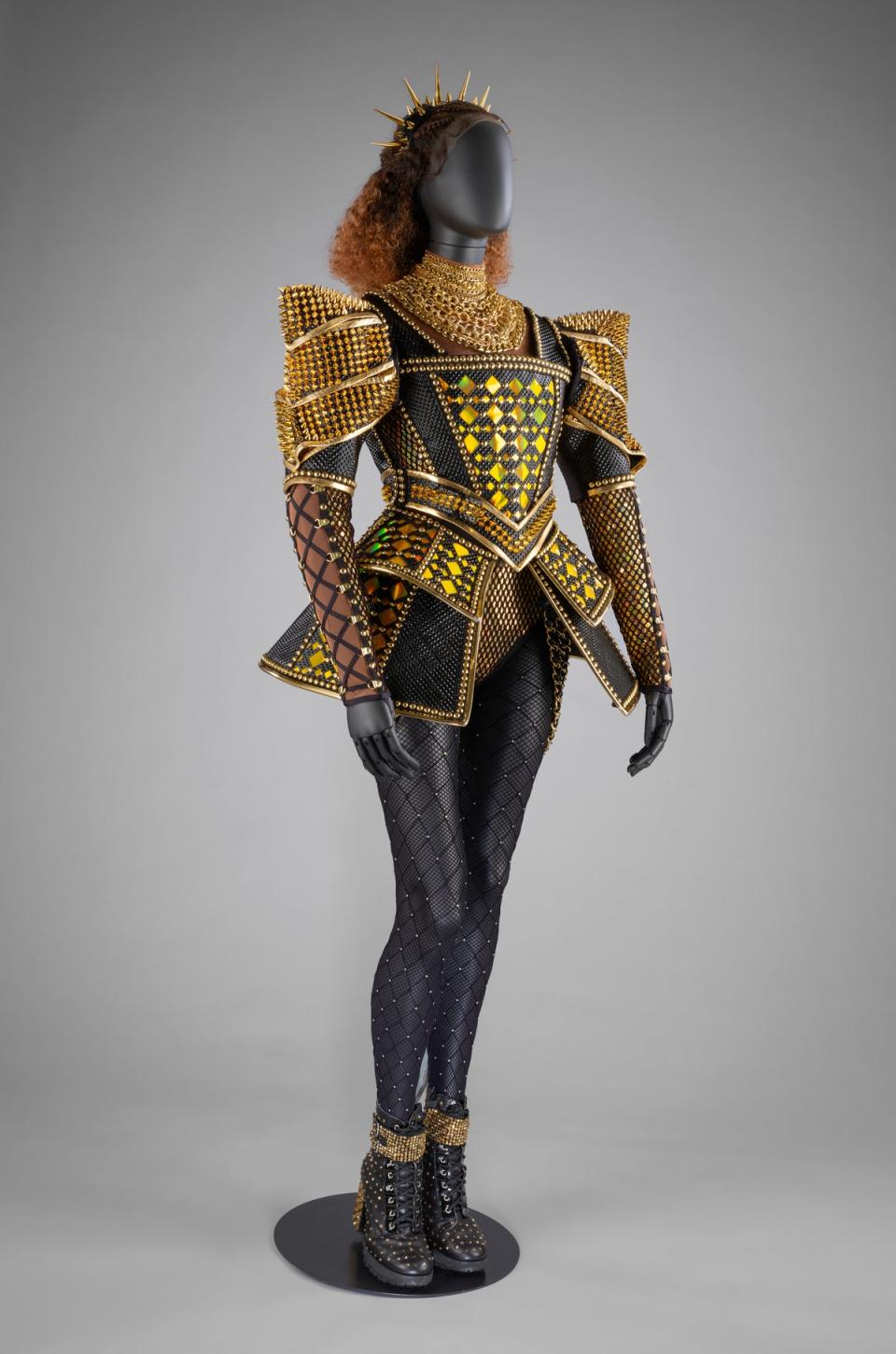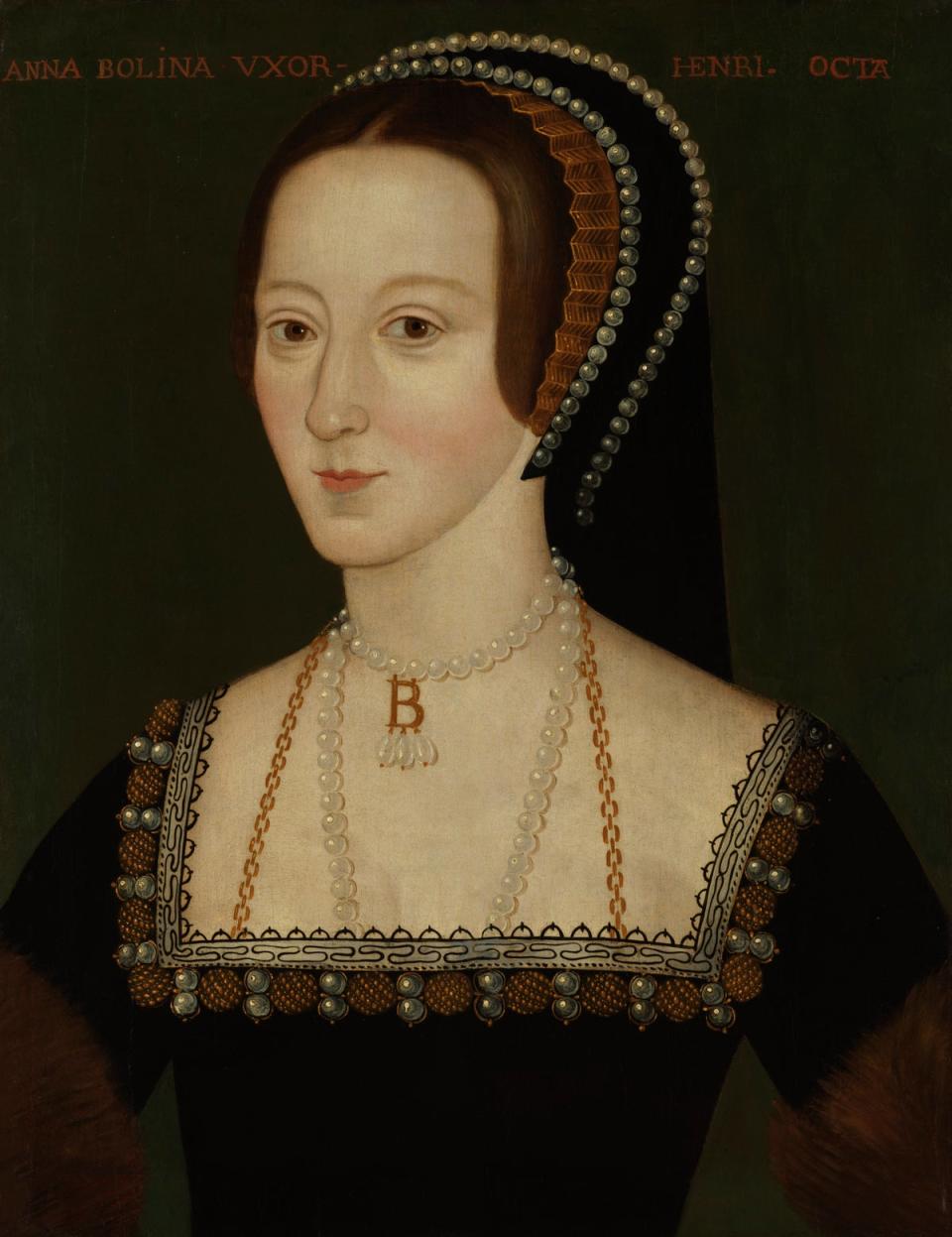Six Lives at the National Portrait Gallery shows Henry VIII’s wives lost the battle for a legacy

I have only caused a Twitter cancellation once in my life. It’s something I find mildly embarrassing to remember – me, the uppity twentysomething, drunk on the power of my smartphone – but, in my defence, it was a different time. A time when casting around for things to be annoyed about before loudly, unselfconsciously declaring them to be evil was a much-embraced collective pastime. The subject of my ire? It was a, erm… mug. Yes, I was in the gift shop of a beloved heritage organisation that I shall not name, when I found myself confronted by a drinking receptacle with fancy, heat-sensitive properties. Alongside it was a sign: “Pour in a hot beverage and watch as Henry’s six wives vanish!”
Urgh, I thought. The trivialising of the lives – and, in some cases, killings – of Henry VIII’s spouses. Gross. Others felt the same. The response was almost instant – the evil mug had to go. “A huge mistake”, “Vile and not funny” and “What the actual f***?” featured among the sample of responses. Next came the sincere apology from the place selling the item. Reader, a day later, that mug was no longer for sale. Funny, then, to come face to face with it once more in the National Portrait Gallery’s Six Lives: The Story of Henry VIII’s Queens exhibition, where it sits in a glass box of coasters, DVDs, Christmas decorations, and other Tudor-wife ephemera. Collected from various members of the gallery’s staff, these items are a reminder that the “divorced, beheaded, died” crew make for queasily good merch.
Almost 10 years since mug-gate, when expressing dismay at how Henry VIII treated women was an easy win, this exhibition is pushing at an open door. It’s happening just down the road from Six, Toby Marlow and Lucy Moss’s whip-smart pop concert slash feminist history lesson (slash religious experience), in which the wives of Henry VIII finally get to tell their stories (“Us two wanted to get X-rated / Soon, ex-communicated / Everybody chill, it’s totes God’s will,” sings Anne Boleyn in “Don’t Lose Ur Head”). That show, one of the biggest breakout hits in years, is now twirling its neck ruffles on Broadway; the fascination with the Tudors, whose 15th- and 16th-century lives are usually the first cartoonish figures we meet in school history lessons, is eternal, the appetite for a more feminist reading of that period ongoing. Six Lives – which, naturally, features one of the costumes from Six – aims to both explore these women as individuals and look at their long cultural afterlives. But does it really offer us a different perspective?
First, visitors must face what these women had to contend with, in the shape of Hans Holbein the Younger’s 1573 portrait of Henry VIII. It’s an image that came to represent power itself, with the wall text pointing to the fact some of his decisions remain in place almost 500 years later. The painting, we’re told, was “intended to overwhelm its original audience”. You feel it: the steely glare, the preposterous clothing, the ability to intimidate. It’s deeply affecting, then, that just a few steps away are Hiroshi Sugimoto’s haunting black and white photographs of waxwork models of the six wives. In these weird, strangely beautiful works, the women look as though they have just stepped out of history and could turn and face you, while also feeling somehow creepy and fake. It’s the bind in which their legacies have left them: their humanity will remain forever just beyond our reach. The portrait of Anne of Cleves is particularly moving, given how often we’re told that all portraits of her repulsed the English public. Here she looks graceful, wise, and just a little bit sad.
This eeriness around the women and their absent presence in history is never quite replicated elsewhere in the exhibition. The show wants to go beyond “divorced, beheaded, died”, to remind us of something easily forgotten: that these women were never all in the same room together, despite the fact they are forever portrayed as a collective. The problem is that the portraits we already know so well make up much of what remains of them, at least in terms of their images.
Where the show is effective is in pointing out just how unsteady these pictures are. One portrait is labelled “Probably Katherine Howard”; another display of miniatures of the six women says that, by the 17th century, images of Anne Boleyn, Katherine Howard and Katherine Parr had become confused. How can we be certain we are looking at who we think we’re looking at? This uneasiness returns looking at Richard Burchett’s 19th-century oil panels, with Anne Boleyn depicted as I have never seen her.

One room dedicated to artworks owned or commissioned by the women points to how aware they were of the power of storytelling and imagery, as does the staggeringly intricate clothing and jewellery on display in most portraits. But these things also allowed them to evade history’s gaze in their own way, too. When human details come, they are rare and disarming. Such as the fact that Katherine Howard wanted to rehearse her execution the night before, “to minimise the spectacle”, or that Jane Seymour had to be shielded from all “dramatic news” due to fears she would have a miscarriage. But rooms dedicated to each of the women can still feel like chasing shadows. Anne Boleyn’s in particular is filled with portraits of men who were out to get her, or that she was accused of having an affair with. It’s hard not to find it deflating.

The gesture behind Six Lives reminded me of Hallie Rubenhold’s wonderful Baillie Gifford Award-winning book The Five, in which she salvaged the stories of the women murdered by Jack the Ripper, giving them back their identities as real people rather than faceless victims. But here, too often the trail is cold. It’s the thorn in the show’s side, one that feels poignant because it’s very hard to change. As part of the show alludes to – and it’s something it could have made more of – there are numerous books, films and plays about Henry VIII and his wives. There is of course plenty of research and scholarship. The show’s real emotional impact, as well as its inevitable weakness, though, is in reminding us of how uncertain and elusive the images of these women remain. Maybe the evil mug was right after all? Maybe there is nothing to do but watch Henry VIII’s wives vanish.
Six Lives: The Stories of Henry VIII’s Queen is at the National Portrait Gallery from 20 June until 8 September; npg.org.uk


